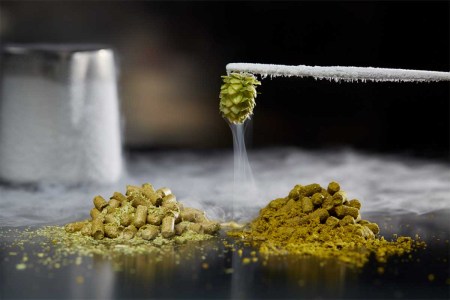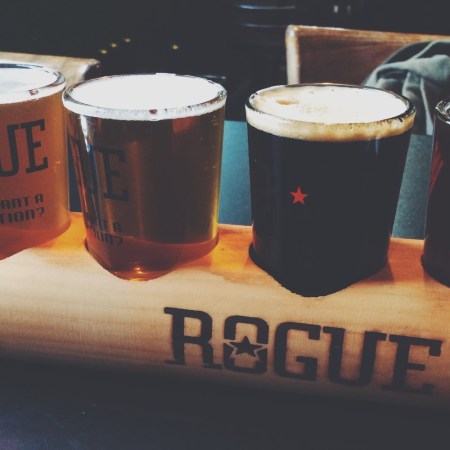One of the key beer industry organizations that gets beverages from the brewery into people’s hands, the National Beer Wholesalers Association (NBWA), got together this week. The convention brought in more than 2,600 beer distributors and others in the industry. The tone, judging by the opening statements, was one of extreme concern regarding how much less beer Americans are drinking and what that means for brewers as a whole.
“This isn’t a red, blue/silver, gold or green network issue, folks,” NBWA president and CEO Craig Purser said, according to Brewbound. “This is an industry-wide, five-alarm fire. And the only way we’re going to fix it is to run toward that fire with purpose and with a plan.”
He went on to say that beer is at a “crossroads” with challenges coming from all angles. There’s a lot to worry about for brewers and those who rely on the beer industry for gainful employment: supply issues of key ingredients because of events like Russia’s invasion of Ukraine, a closer look at beer monopolies by the federal government, conservative boycotts and more. While not explicitly mentioned, there’s also the increasingly clear reality that climate change could cause beer shortages.
Looming as one of the largest issues is the fact that people are simply drinking far less beer than they used to. The market share of spirits revenue surpassed beer for the first time ever in 2023. This is especially the case with the youngest set of drinkers. According to Purser, 46% of the 17.5 million 21- to 24-year-old consumers in 2018 (about 8 million people) had at least one beer each month. There are fewer young people now, with 15.5 million in that age range, and they’re also drinking less beer — only 38% (about 5.9 million) are occasional beer drinkers.
According to Craft Brewing Business, the numbers are stark. The NBWA’s beer purchaser index, which indicates demand, gave beer a 28 rating in March 2023. Anything under 50 represents a contraction.
But there are some bright spots. Imports from Mexico are on the rise, and Modelo took the top spot as most popular beer in 2023 for a number of reasons. That’s an outlier, however, with beer as a whole losing out to other alcohol categories, as well as the rise of people who abstain from alcohol altogether.
5 Brewing Innovations That Are Changing Craft Beer
The craft behind cryo hops, thiolized yeast and something called “Phantasm”“In plain English, the industry has lost about 30%, or 2.2 million, of its youngest LDA consumers in five years,” Purser said. “This is a pattern, and the current brand crisis has accelerated this broader category concern.”
Competition was the biggest worry for individual breweries during the height of the craft beer boom. Which makes sense, seeing as there are more breweries than ever in the country — more than 9,500 with nearly 16,000 craft brands competing for shelf space and consumers’ money. But a sinking tide sinks all ships.
The number of craft breweries is still increasing, especially in certain parts of the country, but at a slower pace. Many are mimicking macro brewers with light lagers to try and find a foothold. Others have closed shop, including iconic breweries like Anchor Brewing Company.
There aren’t a whole lot of answers to what the beer industry plans to do about the decline. There definitely aren’t any easy answers, and it’s a problem that supposedly fast growing and highly-politicized beer gimmicks certainly cannot fix. Purser said that recognizing the decrease as a “category-wide problem” rather than a single brand’s problem is the first step, and that breweries should balance “the expectations and values of our existing consumers while making more room at the bar for new customers.” Women and Black consumers were a particular focus, with groups like the Alliance for Women in Beer and the National Black Brewers Association getting specific call outs in Purser’s speech. From the beer distributor standpoint, Purser recommended distributors diversify their offerings.
Finding new consumers, keeping existing beer drinkers and diversifying are nothing new. To find an actual answer, Purser leaned heavily on the dramatics and said there needs to be a Manhattan Project-esque coming together (without all of the explosions and nuclear fallout) to solve industry-wide challenges.
As someone who writes a lot about vices, I can’t deny that I have a fun beat. There’s plenty of tastings and visits to restaurants, breweries, distilleries, wineries and cannabis producers. But it’s more than that. These individual businesses are, well, businesses. They provide jobs and contribute to the economy. According to NBWA, the beer industry provides nearly 2.4 million jobs, paying $132 billion in wages and $63.8 billion in taxes. It composes 1.6% of the country’s total GDP with a $409 billion contribution to the economy.
Places where people drink beer — whether it’s the bar, brewery or cookout — are also important third places outside of work and home where people can commune. Try as it might, Meta’s metaverse could never replace these third spaces. What will come from this very forward call to action is yet to be seen. In the meantime, at least there’s plenty of good beer to still be enjoyed while the industry figures things out.
Every Thursday, our resident experts see to it that you’re up to date on the latest from the world of drinks. Trend reports, bottle reviews, cocktail recipes and more. Sign up for THE SPILL now.


























